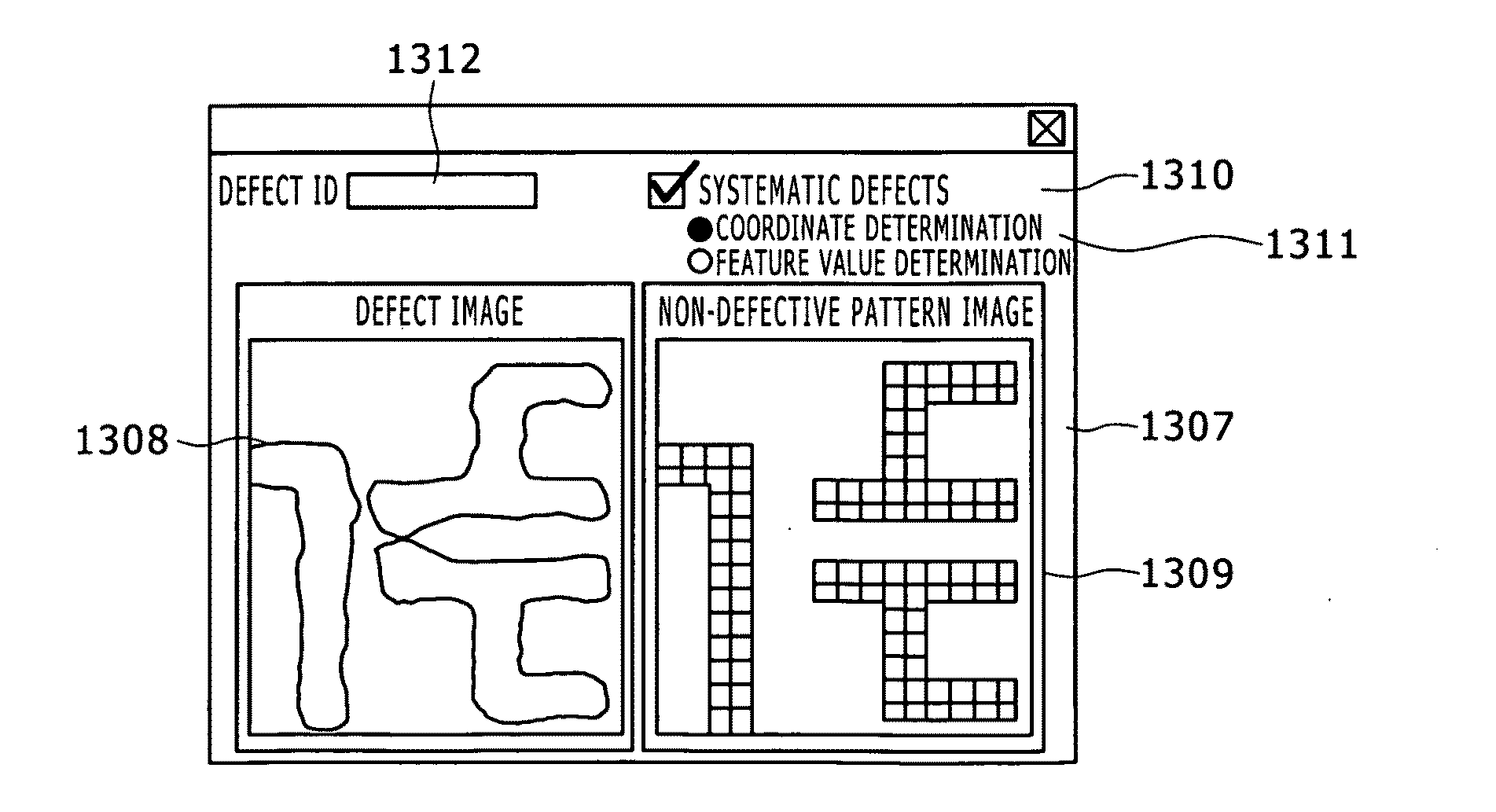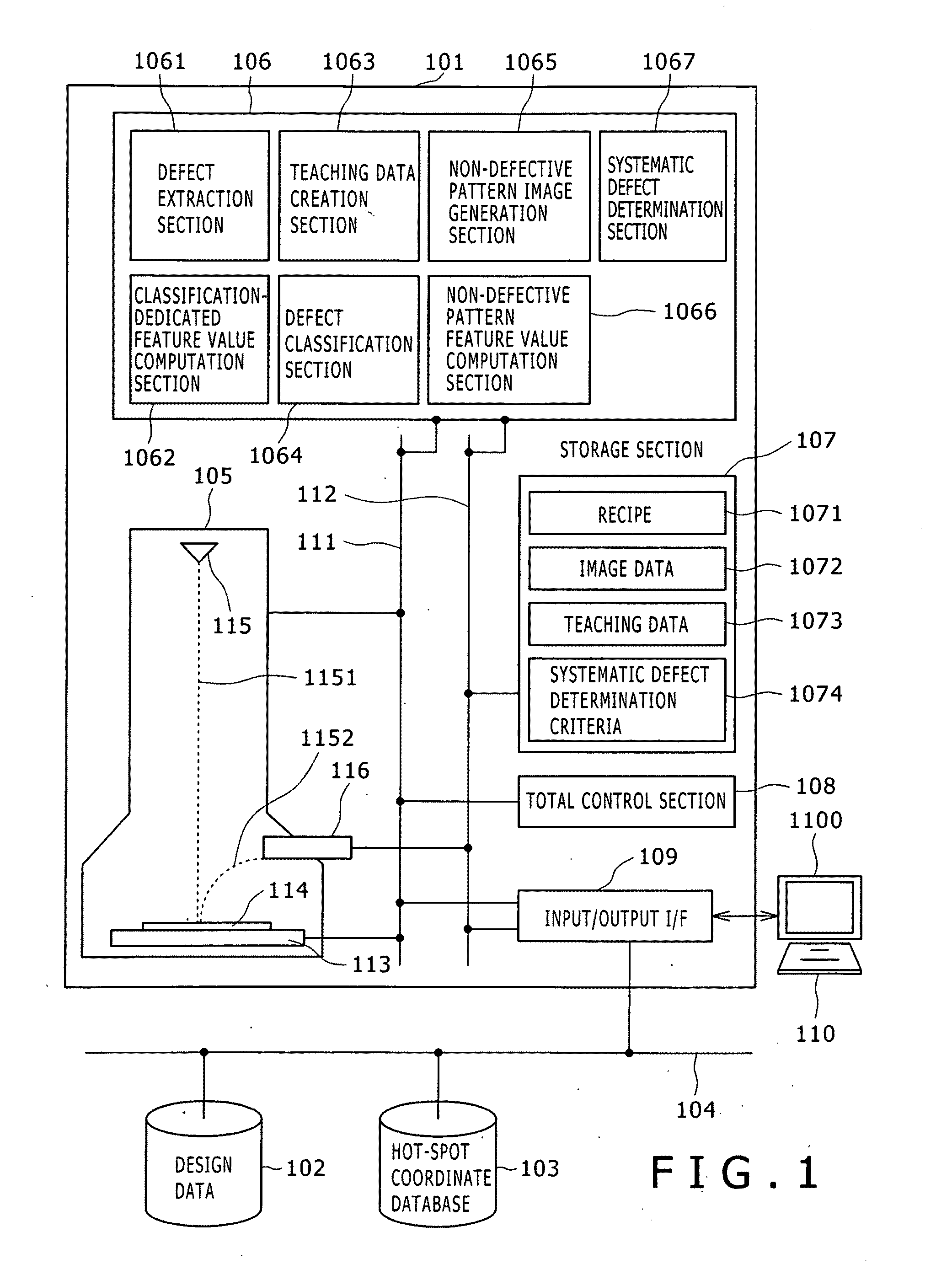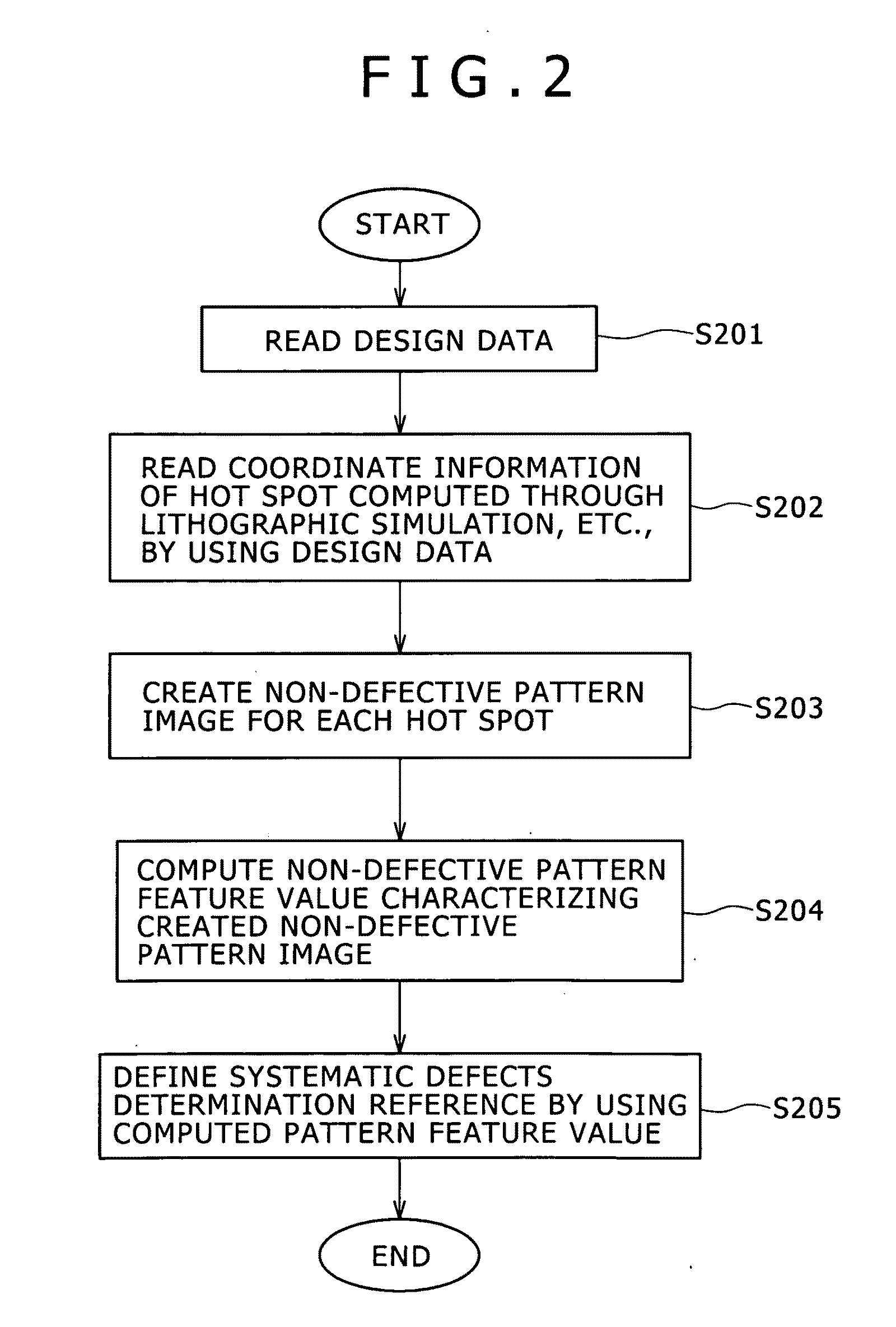Defect review method and apparatus
- Summary
- Abstract
- Description
- Claims
- Application Information
AI Technical Summary
Benefits of technology
Problems solved by technology
Method used
Image
Examples
first embodiment
[0066]A first embodiment of the present invention will be described herebelow.
[0067]FIG. 1 is a view showing the configuration of a system for executing the defect review method according to the present invention. A review SEM 101 is configured to include an electronic optical system 105 that acquire electronic microscope images; a processor and analyzer section 106 that executes various processes; a storage section 107 that stores various data therein; an input / output I / F 109 (I / F=interface) that performs data input or output in communication with the outside, and a total control section 108 that controls the respective sections. The respective sections are interconnected via a control bus 111 and a data bus 112. The input / output I / F 109 is connected to an input / output terminal 110, such as a display / keyboard. An operator is enabled to issue instructions or commands or to verify the apparatus status via the input / output terminal 110.
[0068]In the electronic optical system 105, a sam...
second embodiment
[0124]A defect review method of a second embodiment of the present invention will be described herebelow. A system configuration as used in the present, second embodiment is identical to that shown in FIG. 1. According to the first embodiment, the non-defective pattern image, which is used for specifying the systematic defect determination criteria as the image data 1072 stored in the storage section 107, is created by use of the coordinate data stored in the hot-spot coordinate database 103. According to the present embodiment, however, the process is characterized in that the defect classification result is utilized for the creation of the non-defective pattern image, thereby to redefine the systematic defect determination criteria 1074. More specifically, as a result of the execution of the process shown in FIG. 3, the classification results and the systematic defect determination results are obtained in respective defect image datasets. The classification results are correlated ...
PUM
 Login to View More
Login to View More Abstract
Description
Claims
Application Information
 Login to View More
Login to View More - Generate Ideas
- Intellectual Property
- Life Sciences
- Materials
- Tech Scout
- Unparalleled Data Quality
- Higher Quality Content
- 60% Fewer Hallucinations
Browse by: Latest US Patents, China's latest patents, Technical Efficacy Thesaurus, Application Domain, Technology Topic, Popular Technical Reports.
© 2025 PatSnap. All rights reserved.Legal|Privacy policy|Modern Slavery Act Transparency Statement|Sitemap|About US| Contact US: help@patsnap.com



